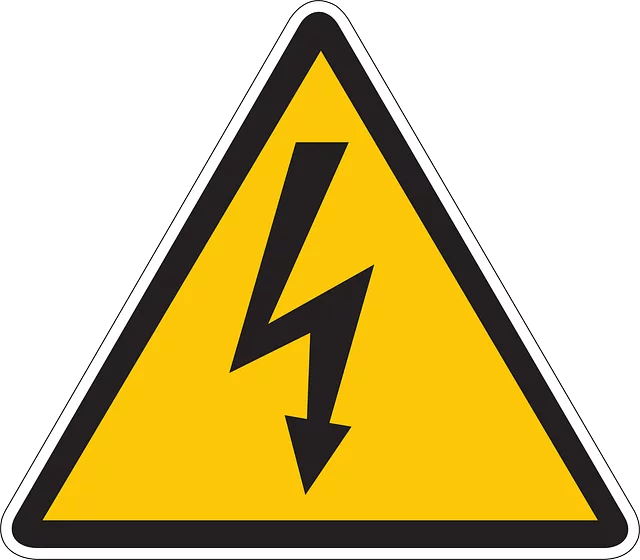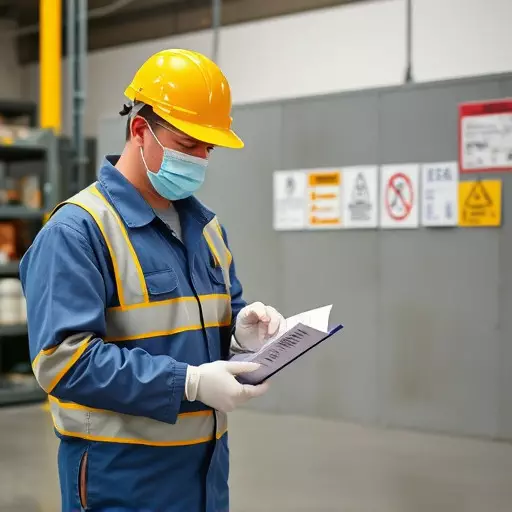OSHA workplace safety inspections are legally required checks that ensure hazard assessment protocols and promote secure work environments. These inspections cover personal protective equipment (PPE), safety data sheets (SDS), training records, and hazard control measures. Hazard assessment protocols identify fall risks, guide safety measures, and align with current industry standards. Safety Data Sheet (SDS) compliance is crucial for mitigating chemical hazards and providing safe handling procedures. Regular audits verify SDS management, training, PPE fitness, and overall fall protection system effectiveness. Common pitfalls include non-compliant inspections and equipment maintenance neglect. To improve, update hazard assessment protocols, ensure SDS accuracy, and maintain equipment to OSHA standards.
“Ensuring worker safety on construction sites and elevated workplaces is paramount, and fall protection systems play a critical role. This comprehensive guide delves into the intricacies of OSHA workplace safety inspections, highlighting the significance of hazard assessment protocols in fall protection. We explore how Safety Data Sheet (SDS) compliance reveals potential risks, offering a step-by-step audit process for employers to follow. By understanding common pitfalls and implementing effective post-audit strategies, organizations can continually improve their safety measures.”
- Understanding OSHA Workplace Safety Inspections: A Legal Perspective
- The Importance of Hazard Assessment Protocols in Fall Protection
- Safety Data Sheet (SDS) Compliance: Uncovering Potential Risks
- Comprehensive Audit Process: Step-by-Step Guide for Employers
- Common Pitfalls and How to Avoid Them During Audits
- Implementing Effective Fall Protection Systems Post-Audit
- Continuous Improvement: Regular Safety Inspections and Updates
Understanding OSHA Workplace Safety Inspections: A Legal Perspective
OSHA workplace safety inspections are a critical component of ensuring compliance with hazard assessment protocols and maintaining a safe work environment. These inspections, mandated by law, are designed to identify potential risks and violations of occupational safety and health standards. During an OSHA inspection, trained officials review records, examine working conditions, and inspect equipment to ensure adherence to relevant regulations.
Key aspects assessed include proper use of personal protective equipment (PPE), safety data sheet (SDS) compliance, training documentation, and the implementation of effective hazard control measures. By conducting these inspections, OSHA not only enforces legal obligations but also educates employers on best practices, promoting a culture of continuous improvement in workplace safety.
The Importance of Hazard Assessment Protocols in Fall Protection
Fall protection system audits are a critical aspect of OSHA workplace safety inspections, ensuring that hazardous environments are safely managed. A robust fall protection strategy begins with thorough hazard assessment protocols. These protocols play a pivotal role in identifying potential risks and determining the most suitable prevention measures. By meticulously evaluating work sites, companies can pinpoint areas where workers are exposed to fall hazards and implement corresponding safety procedures.
OSHA’s guidelines emphasize the importance of these assessments, encouraging employers to go beyond mere compliance with safety data sheet requirements. Effective hazard assessment protocols not only guarantee OSHA workplace safety inspections but also foster a culture of proactive safety management. This involves regularly updating risk assessments as work environments evolve, ensuring that fall protection systems remain effective and aligned with the latest industry standards.
Safety Data Sheet (SDS) Compliance: Uncovering Potential Risks
During fall protection system audits, one crucial aspect that OSHA workplace safety inspections focus on is Safety Data Sheet (SDS) compliance. SDS provide essential information about the hazards associated with chemicals and necessary precautions for safe handling. Ensuring that these sheets are readily available, accurate, and up-to-date can significantly mitigate risks. By following rigorous hazard assessment protocols, companies can identify potential hazards within their fall protection systems and ensure that all employees are fully informed about the risks and protective measures.
Non-compliance with SDS requirements can lead to serious safety issues. Auditors scrutinize these documents to verify that they accurately reflect the chemicals used in fall protection gear, proper storage guidelines, and emergency response procedures. Outdated or incomplete SDS may result in incorrect handling practices, increasing the risk of accidents. Therefore, maintaining comprehensive and current SDS is vital for fostering a safe work environment during OSHA workplace safety inspections and beyond.
Comprehensive Audit Process: Step-by-Step Guide for Employers
A comprehensive fall protection system audit is a critical component of OSHA workplace safety inspections and ensures that employers maintain a safe work environment for their employees. The process involves several meticulous steps to identify potential hazards, evaluate compliance with safety regulations, and implement effective control measures.
It begins with a thorough hazard assessment protocol, where auditors systematically examine the worksite, identifying areas where falls could occur. This includes evaluating elevated surfaces, temporary or fixed scaffolds, and other at-risk locations. Once hazards are identified, the next step is to verify compliance with relevant OSHA standards and industry regulations. Safety data sheet (SDS) management is a key aspect here, ensuring that all necessary information on protective equipment and their proper use is readily available. Auditors should check for up-to-date training records, personal protective equipment (PPE) fitness, and the overall effectiveness of fall protection systems in place. This step-by-step approach allows employers to address any non-compliance issues promptly and fosters a culture of continuous improvement in workplace safety.
Common Pitfalls and How to Avoid Them During Audits
During fall protection system audits, organizations often encounter common pitfalls that can delay progress and undermine the integrity of their safety programs. One major issue is OSHA workplace safety inspections that fail to adhere to stringent hazard assessment protocols. This occurs when inspections are superficial or focused solely on compliance with regulatory requirements rather than a thorough evaluation of potential hazards. To avoid this, conduct comprehensive risk assessments that consider all possible fall risks, involving both employees and external experts. Regular training for inspection teams can significantly enhance their ability to identify vulnerabilities and ensure safety data sheet (SDS) compliance.
Another frequent pitfall is overlooking the importance of regular equipment maintenance. Fall protection systems, including ladders, scaffolds, and personal protective equipment (PPE), must be regularly inspected and maintained to guarantee their effectiveness. Implement a structured maintenance schedule that includes routine checks and repairs, documented in detail. Foster a culture of safety where employees are encouraged to report any issues or potential hazards they encounter. This proactive approach will help prevent accidents and ensure that your fall protection systems remain reliable during OSHA workplace safety inspections.
Implementing Effective Fall Protection Systems Post-Audit
After conducting a fall protection system audit, it’s crucial to translate findings into actionable steps for enhancement. The first order of business is to address any non-compliance identified during the OSHA workplace safety inspections. This involves updating and implementing effective hazard assessment protocols tailored to your specific work environment. Regularly reviewing and revising these protocols ensures they remain relevant and comprehensive.
Moreover, ensuring safety data sheet (SDS) compliance is integral to the process. Properly maintaining and distributing SDS for all chemicals and hazardous materials used in your operations allows employees to make informed decisions regarding safety. This step reinforces a culture of proactive workplace safety, complementing the insights gained from the audit.
Continuous Improvement: Regular Safety Inspections and Updates
Regular safety inspections and updates are integral to a comprehensive fall protection system audit, reflecting a commitment to continuous improvement in workplace safety. These thorough checks should encompass all aspects of the system, from harness and lanyard integrity to anchor point stability and access points’ securement. Following OSHA’s workplace safety inspections guidelines ensures compliance with industry standards and identifies potential hazards that may have been overlooked.
During these inspections, it’s crucial to assess and document adherence to hazard assessment protocols. This involves scrutinizing the work environment for risks associated with heights and implementing appropriate controls as stipulated in the Safety Data Sheet (SDS) for each equipment utilized. Regular updates based on findings ensure that fall protection systems remain effective and adaptable to evolving workplace conditions, fostering a culture of safety and compliance.


